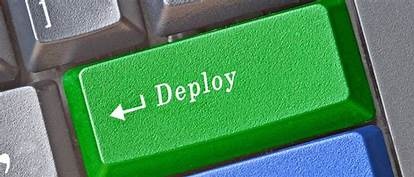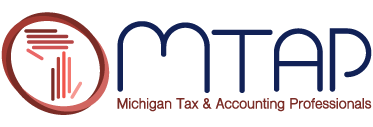Moving Forward with Remote Work
Remote Work is an Opportunity
to Recreate the Business Model
By Jon A. Hayes, MTAP Executive Director
Related: Employee or Independent Contractor? COVID Demands You Revisit It
December, 2020 - When the COVID pandemic hit in March, 2020 and government at all levels invoked sheltering and social distancing orders to mitigate the spread of infection, businesses of all sizes were forced to quickly implement remote, work-from-home systems whether they had them at the ready or not.
Many owners and principals in small accounting and tax practices were unprepared for the shift as evidenced by their reluctance to close offices
 due to a lack of confidence that employees remotely accessing company files and other information were adequately protected from being compromised. MTAP fielded numerous calls seeking advice on making the remote work transition. With all of the challenges involved in making the shift, the one factor that seemed to consume their thoughts wasn’t data security but employee oversight. Many owners feared employees wouldn’t work the requisite hours they were being paid for if they weren’t actively monitoring their work as they could in the office.
due to a lack of confidence that employees remotely accessing company files and other information were adequately protected from being compromised. MTAP fielded numerous calls seeking advice on making the remote work transition. With all of the challenges involved in making the shift, the one factor that seemed to consume their thoughts wasn’t data security but employee oversight. Many owners feared employees wouldn’t work the requisite hours they were being paid for if they weren’t actively monitoring their work as they could in the office.They weren’t the only ones struggling with this. We read numerous accounts of big corporations and federal and state bureaucracies also struggling with remote work. Skepticism that employees were giving them “40 hours of productivity” brought countless time-consuming Zoom calls used to insure employees were on the job and producing at the same levels as they did working in the office. After about 6 weeks working in this new system, managers found that productivity was actually up – yes, employees were actually more efficient than when they worked under onsite supervision.
Managers also experienced significant pushback from employees who opposed working a specific time schedule each day when their tasks didn’t require such rigidity. Employees argued that sheltering orders that forced their children to stay home and transition to virtual learning systems required their active oversight on top of the daycare they also had to provide. Many self-initiators had already revised their schedules to satisfy their growing household duties with their work requirements. When pressed to divulge the fact they weren’t satisfying their hourly schedule requirements, the employees immediately pointed to their increased productivity and self-initiative in taking on more work to justify the changes they had made.
So do you see the parallel with the challenges small accounting and tax practices face moving forward as yet another winter of sheltering is inevitable as infection again spreads? Do you see how you should shift the work paradigm to insure your employees remain happy and motivated?
My Personal Perspective on Remote Work
Twenty-one years ago, I made a fundamental shift to a remote work-from-home system necessitated by a serious health issue. Through consultation with my physician and physical therapists, I realized that I couldn’t invest the time and energy in maintaining both a home and an office building if I wanted to achieve a meaningful recovery. So we sold our office building and our home, and we built a home with a dedicated home office in it.

The move was not met with much support from colleagues and friends because it simply challenged “the norm” for how business was supposed to be done. I also struggled with the shift as it significantly reduced the “face-to-face” interactions I’d had in the traditional office structure. The isolation became problematic at times, especially in winter when members were immersed in another tax season and phone calls became more infrequent. The traditional 9 to 5 work schedule also became a struggle since many of the things I did were deadline and not hourly-oriented.
Through trial and error, I learned that my days had to juggle the same kind of challenges as many employees now face. It didn’t matter if I completed the vast majority of my tasks at 10:00 p.m. or 10:00 a.m. so long as they got done BY THE DEADLINE. I learned to set up a reward system that gave me motivation not only to complete tasks, but to often go further in that process when I could see the benefits for myself and/or the members. For example, by completing a project I worked at from 9:00 p.m. until 2:00 a.m. and then being available for members via phone and email from 8:30 a.m. until 3:00 p.m., I could justify getting out to see my kids play high school sports that began at 4:00 p.m. AND satisfy the craving to network with other adults. Often, I would find myself back at my desk later in the evening responding to emails, reading more industry news, and planning or revising a schedule to tackle and complete more on my “to-do” list to achieve more rewards.
There would be weeks where I’d record many more than 40 hours of work and other weeks where I would record less than 40. But productivity did not suffer. More importantly, the creativity needed to fuel innovation and efficiency actually increased and at times had to be harnessed in.
Remote Work is a Golden Opportunity
To Redefine Your Efficiency and Profitability
I think business owners MUST assume that remote work will be required as we navigate through the holidays and into 2021. Even if vaccines are
 made available by the end of this year, it will take 3 to 5 months for the needed distribution and inoculation to take place to create the herd immunity experts say is needed to bring this virus under control. With or without government-mandated shutdowns, your accounting and tax business can and should maintain remote work systems through tax season to ensure personnel and clients don’t risk bringing or catching the virus by coming to your office.
made available by the end of this year, it will take 3 to 5 months for the needed distribution and inoculation to take place to create the herd immunity experts say is needed to bring this virus under control. With or without government-mandated shutdowns, your accounting and tax business can and should maintain remote work systems through tax season to ensure personnel and clients don’t risk bringing or catching the virus by coming to your office.In doing this, we recommend that you give consideration to the following:
- Implementing task- and deadline-oriented work systems. Instead of continuing to require “x” hours worked for employees who are not required to man phones or provide business day customer service, create schedules of tasks and their deadlines for completion. Because you are a “deadline-driven” business, this shift should be easy.
- Converting those employees exclusively providing a specific service (payroll for example) to contractor status since their workload is consistently the same. By converting them to a contract, you alleviate the need to actively supervising them, and you can reduce employee-related expenses by converting some of those savings into the contractual fee so that now-former employee can seek out paying for the benefits themselves. You can also encourage and help the new contractor to incorporate their own business and help them market their service to other firms.
- Reconfiguring your office for greater social distancing for those employees who must continue coming in and clients who must stop in for an appointment because they lack the technology to do it virtually. This may be the first step to downsizing your office size and needs when a lease runs out or the market provides a good opportunity to sell your building and either look to buy or rent another facility.
Implementing these possible changes can reduce your overhead expenses, as well as reduce the oversight responsibilities you have so you can do more providing the services you charge for. And the pandemic offers the best possible time to successfully sell your employees on such a new direction.
Devising and Implementing
A Remote Work System
If you haven’t yet implemented a remote work system, you still have plenty of time to get it done before the new year. Here are some links that will help you implement a system or improve the one you have:
An Economical System for a Small Practice Remote Work System
A system developed by MTAP President Robin Wheaton for small practice operations.
A Practical Guide for Remote Work Tools
Learn more about the work tools you can use to guarantee an efficient remote work system.
Troop Messenger as a Practical Online Communications Tool
These tools help you implement communications systems that best meet the needs of employees and clients.
25 Remote Work Tools for Happy and Productive Employees
Great options to improve efficiency and keep morale high in challenging times.
Now Let’s Tackle Security
Security is the most essential ingredient to your remote work system. In fact, if you have a Preparer Tax Identification Number (PTIN) through the Internal Revenue Service, a practice security system and plan are required whether or not you have a remote work system.
 “Protecting taxpayer data is not only a good business practice, it’s the law for professional tax preparers,” said IRS Commissioner Chuck Rettig. “Creating and putting into action a written data security plan is critical to protecting your clients and protecting your business.”
“Protecting taxpayer data is not only a good business practice, it’s the law for professional tax preparers,” said IRS Commissioner Chuck Rettig. “Creating and putting into action a written data security plan is critical to protecting your clients and protecting your business.”The Financial Services Modernization Act of 1999, also known as the Gramm-Leach-Bliley (GLB) Act, gives the Federal Trade Commission authority to set information safeguard regulations for various entities, including professional tax return preparers. According to the FTC Safeguards Rule, tax return preparers must create and enact security plans to protect client data. Failure to do so may result in an FTC investigation.
The IRS also may treat a violation of the FTC Safeguards Rule as a violation of IRS Revenue Procedure 2007-40 , which sets the rules for tax professionals participating as an Authorized IRS e-file Provider.
The FTC-required information security plan must be appropriate to the company’s size and complexity, the nature and scope of its activities and the sensitivity of the customer information it handles. According to the FTC, each company, as part of its plan, must:
- designate one or more employees to coordinate its information security program;
- identify and assess the risks to customer information in each relevant area of the company’s operation and evaluate the effectiveness of the current safeguards for controlling these risks;
- design and implement a safeguards program and regularly monitor and test it;
- select service providers that can maintain appropriate safeguards, make sure the contract requires them to maintain safeguards and oversee their handling of customer information;
- and evaluate and adjust the program in light of relevant circumstances, including changes in the firm’s business or operations, or the results of security testing and monitoring.
The FTC says the requirements are designed to be flexible so that companies can implement safeguards appropriate to their own circumstances. The Safeguards Rule requires companies to assess and address the risks to customer information in all areas of their operations.
Here are the essential links to help you create a data security plan as required by the IRS:
IRS Publication 4557, Safeguarding Taxpayer Data , details critical security measures that all tax professionals should enact. The publication also includes information on how to comply with the FTC Safeguards Rule, including a checklist of items for a prospective data security plan. Tax professionals are asked to focus on key areas such as employee management and training; information systems; and detecting system failures.
Make a Plan for Protecting Data:
https://www.irs.gov/newsroom/working-virtually-make-a-plan-for-protecting-data-and-reporting-theft-part-5-of-security-summit-tips-for-tax-professionals
Steps for Creating a Data Breach Plan:
https://www.irs.gov/individuals/data-theft-information-for-tax-professionals
Operational Security Policies and Procedures:
https://www.irs.gov/privacy-disclosure/operational-security-policies-and-procedures
More on Creating a Data Security Plan:
https://www.cpapracticeadvisor.com/tax-compliance/news/21089661/how-to-create-a-tax-data-security-plan
Here are some links to help you select or improve the data security and communication systems for your business:
The Best Security Systems for Your Business
Analysis of 8 practical security systems you should consider.
How to Maintain Security When Employees Work Remotely
A primer on using cloud storage and security systems to protect your data.
How to Secure Your Video Conferencing System from a Hacker
Securing Zoom, Microsoft Teams, Cisco-WebEx, Adobe Connect, GoToMeeting, and Slack Systems from hackers .
Conclusion
Our goal in compiling this information is to give you options for complying with pandemic-related requirements and to consider the unique opportunities this crisis offers as you move forward building your business. If there is something we failed to consider or cover, we welcome your input and advice. You can email it to us at staff@michigantap.net.
